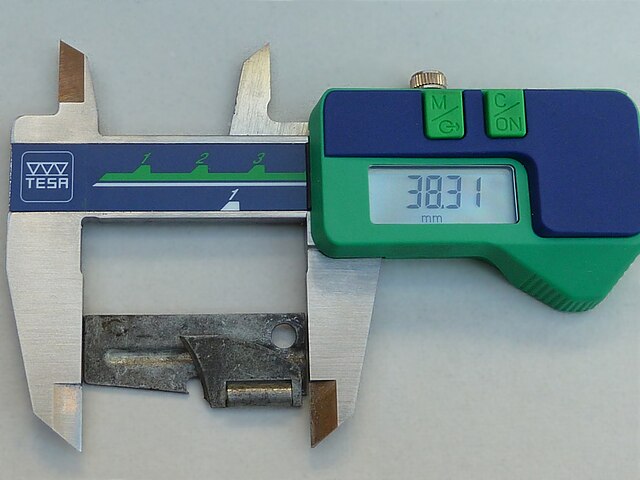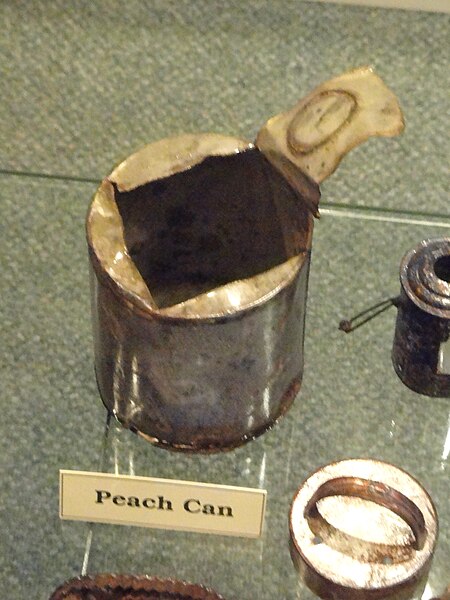The P-38 is a small can opener that was issued with canned United States military rations from its introduction in 1942 to the end of canned ration issuance in the 1980s. Originally designed for and distributed in the K-ration, it was later included in the C-ration. The lightweight, tiny, P-38 foldable military can opener was developed by Chicago’s Subsistence Research Lab in 1942 in only 30 days. As of 2024, it is still in production and sold worldwide.
A Vietnam War-era P-38 can opener, with a U.S. penny shown for size comparison.
P-38 can opener measured by digital calipers. It is 38.31 millimeters (1.508 in).
Size comparison of P-51 and P-38 openers
A U.S. Army C-ration with can opener, Da Nang, Vietnam, c 1966–1967.
A can opener or tin opener is a mechanical device used to open metal tin cans. Although preservation of food using tin cans had been practiced since at least 1772 in the Netherlands, the first can openers were not patented until 1855 in England and 1858 in the United States. These early openers were basically variations of a knife, though the 1855 design continues to be produced.
A late-20th-century can opener with a rotating cutting wheel and a counter-rotating serrated wheel, for left-handed use
Peach can, September 5, 1856
"Simplex" can sealing machine
A can opener's twist key








